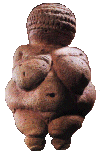Isis Origin of name: Egyptian. Mother goddess. Period of worship: Early
dynastic period (ca. 2700 BC) and probably earlier until the end of Egyptian history
(ca. 400 AD). Synonyms: None. Center(s) of cult: universal throughout area of
Egyptian influence, but particularly at Gaza and at Behbeit el-Hagar in the Nile
delta. Also at Thebes on the west bank, at Dendara and in the temple of Seti I at
Abydos. A Greco-Roman sanctuary existed on Philae (now moved to Agidgiya). Art
references: monumental carving, contemporary sculptures, wall paintings and reliefs.
Literary sources: Pyramid texts, the "Great Hymn to Isis" from the stele of
Amenemose (Louvre); etc.
Isis is one of the great deities of the Egyptian pantheon, with Osiris, probably
maintained the most universal appeal outside Egypt. Greco-Roman culture was particularly
enamored of her and called her the Stella Maris (star of the sea), represented
in the heavens by the north star. An offspring of Geb and Nut in the Heliopolis
genealogy, Isis is the mother of the god-kings of Egypt and both elder sister and
consort of Osiris. The other siblings include Seth and Nepthys. Isis is depicted in
human form, but usually wearing a crown in the form of a throne or cow horns
encircling a sun disc (see Hathor). She may also be depicted, wholly or in part,
as a hawk. From the New Kingdom (ca. 1500 BC) onward she is also associated with
a device not dissimilar to the ankh symbol, known as the "Isis knot." The symbol
was incorporated into a bloodstone amulet known as the tyet.
In legend she is responsible twice for restoring Osiris, once after Seth has thrown
his body into the Nile and once again after Seth has dismembered it. She impregnates
herself from his corpse as he is entering the underworld as its ruler, and from
Osiris' semen conceives Horus, to whom she gives birth in the papyrus swamps at
Khemmis in the Nile delta. Thus, since Horus instilled himself into the kings of
Egypt during life, and Osiris took over on death, the ruler was perceived to suckle
at the breast of Isis (as Harpokrates). As Isis guarded Horus against injury, so
she also protected the earthly king of Egypt as a child. In the courts of the gods,
Isis put up a strong challenge in support of Horus's claim to the throne against
that of her brother, Seth, and she showed Seth to be guilty of sodomy against Horus.
In the Greco-Roman period, Isis sanctuaries were built on the island of Delos, and at
Pompeii. There is much argument that the Isis cult influenced the portrayal of the
Christian Virgin Mary, who was also known as Stella Maris and whose portraits
with the Christ often bear a striking similarity to those of Isis with Horus.
Source: Encyclopedia of Gods 13 Dec 97
|
|
The goddess's name probably meant 'seat' or 'throne' and was written with a sign
identical to the one which she wore on her head. Isis could therefore originally
have been the embodiment of the throne. She was of special significance for the
king, being regarded as his symbolic mother. In myth she sought her dead husband
and brother, Osiris, conceived her son Horus by him, buried him and mourned him
together with her sister Nephthys. The lamenting goddesses were also symbolically
represented in the form of two birds of prey (kites). They are seen on the sides
of coffins in human form and with outstretched wings, protecting the deceased and
wafting the power of life towards him. In the second hour of Amduat the two
goddesses were represented as two snakes rearing up in the bows of the solar barque
facing in the direction of the journey.
Isis was worshipped as the 'great of
magic' who had protected her son Horus from snakes, predators, and other dangers;
thus she would protect mortal children also. Orion was regarded as the soul of
Osiris, hence astrologers imagined Sirius, whom the Egyptians called Sodpu and the
Greeks Sothis, to be Isis. In the New Kingdom Isis was closely connected with
Hathor whose physical attributes, the cow's horns and sun disc, she adopted. The
ancient Egyptians regarded the goddess as 'the eye of Re,' although Plutarch
conceived of her as a moon goddess. In Greek times Isis became the protectrix of
seamen and received a rudder as one of her attributes as Isis Pharia.
Source: Illustr. Dictionary of
The Gods and Symbols of Ancient Egypt 11 Jan 98
|
|







